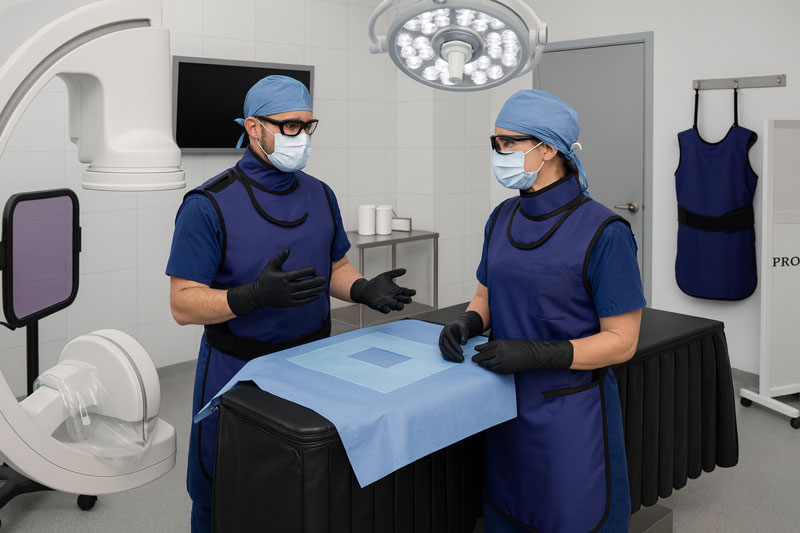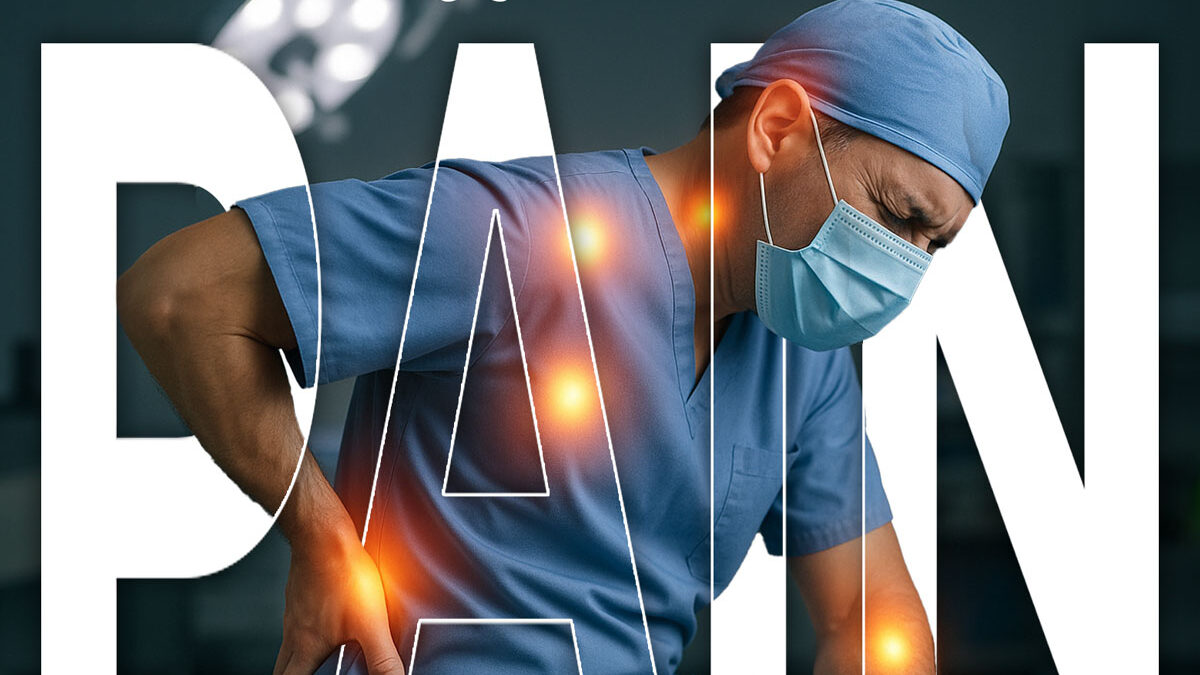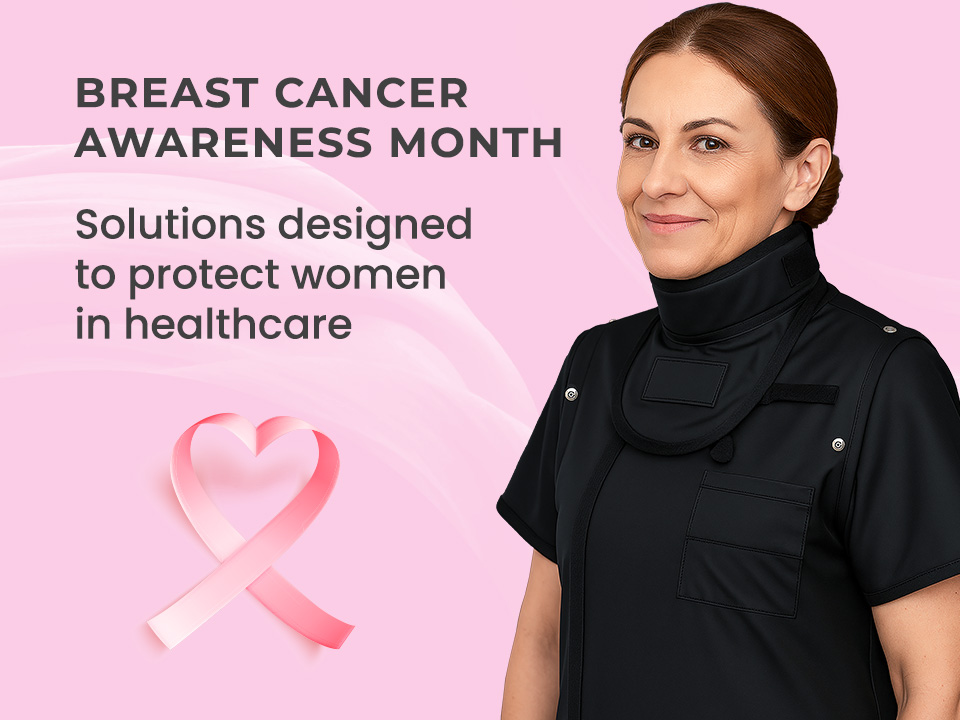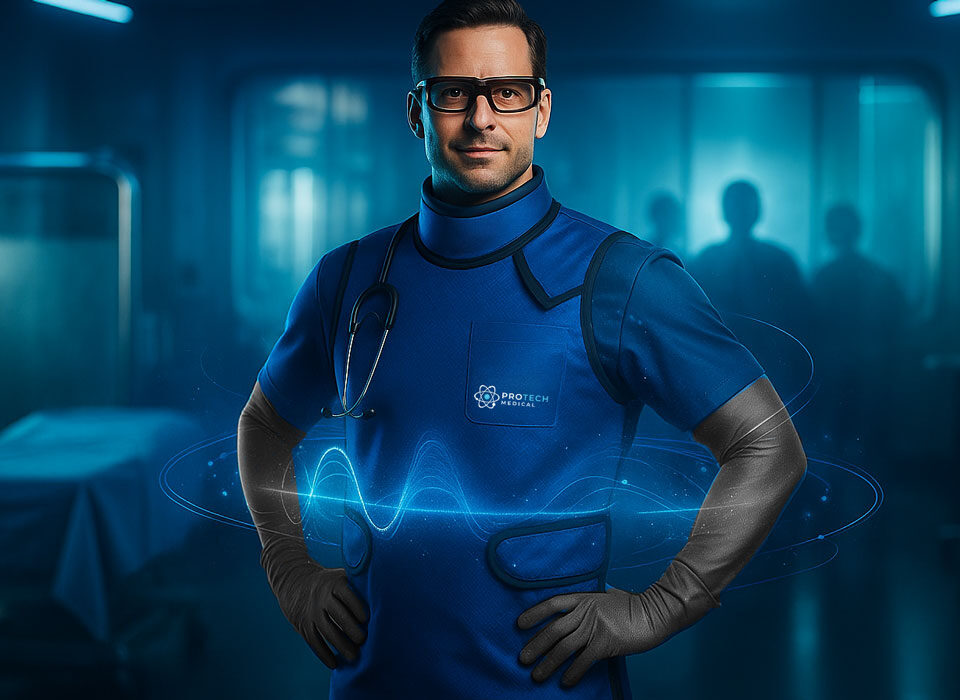Addressing Musculoskeletal Health in Radiology
Shaping a Safer Future For medical professionals
Radiology and interventional healthcare are essential to modern medicine, requiring staff to spend long hours in high-intensity environments. Along with the vital work of protecting patients, professionals must also protect themselves, balancing radiation safety with physical wellbeing. Over time, the equipment designed to guard against radiation has also been linked to fatigue and musculoskeletal strain, highlighting the need to continuously improve.
Traditional lead aprons, while effective, can often place concentrated weight on the shoulders and back. Today’s ergonomic options, such as vest-skirt combinations and elastic frontal aprons, are optimized to distribute weight more evenly across the body and reduce musculoskeletal burden. Protech Medical’s lead-free Nano and Premier Core materials take this further by significantly reducing overall weight while providing optimal protection.
However, garments aren’t the full picture nor the peak in protection. Further improvements in existing safety options and technological innovations are already changing the way safety looks in the procedure room. By embracing a layered approach to radiation safety, combining lighter materials, ergonomic garment designs, and integrated shielding systems, healthcare teams can reduce physical stress while increasing their overall protection.
Rethinking Protection with a Layered Approach
Radiation safety is never achieved through a single tool, tactic, or policy, it requires a coordinated system of protections and cultural commitments that work together. This philosophy is at the heart of the multi-layered approach to radiation safety: multiple resources used in combination to safeguard both radiation health and musculoskeletal wellbeing.
For example:
• Patient Drapes block up to 95% of scatter radiation without adding weight to staff. Since scatter is the primary source of occupational dose, the use of drapes in combination with garments can lower the required lead equivalent protection in garments, thereby reducing weight burden dramatically.
• Barrier systems, table drapes, and mobile shields used in combination can extend coverage where garments alone cannot.
• Lightweight ergonomic garments complement these barriers, reducing reliance on heavy, full-body wear.

Practical Solutions: Lightening the Load
Musculoskeletal strain is not inevitable. With smarter product choices and healthy daily practices, healthcare professionals can protect their long-term wellbeing.
• Opt for lighter lead equivalence (0.25 mm vs. 0.50 mm): Lower lead-equivalent garments can nearly halve weight. When paired with other layers of protection such as drapes and barriers, they provide safe levels of shielding for many procedures while significantly easing strain.
• Choose advanced core materials: Protech’s Nano and Premier cores maintain protective strength while cutting down on weight, lessening cumulative stress on the body.
• Select ergonomic garment styles: Vest-skirt combinations and Flexback aprons distribute weight more evenly. Styles offering lumbar support through the use of elastic enhancements or belts further improve posture and comfort. In vests, Protech’s TriTab Vest and Flexback Vest provide that same supportive benefit, shifting the weight of the garment from the shoulders to the hips.
• Practice posture, stretching, and body mechanics: Upright alignment and mindful movement reduce cumulative stress. Adding stretching routines for the shoulders, neck, and back before and after procedures helps reset posture. Core-strengthening and flexibility exercises such as planks, light yoga, or resistance band work can also improve resilience. This could even be a valuable area for industry dialogue: “What stretches, routines, or exercises do you use to prepare for a procedure?”
• Wear supportive footwear: Proper shoes cushion joints and provide stability during long procedures.
Building a Healthier Future
Musculoskeletal awareness is growing across the industry, with more hospitals and clinical teams recognizing the need to pair radiation safety with ergonomic health. Practical solutions already exist to make this balance possible.
At Protech Medical, we’re proud to support this shift with innovations that reduce both radiation dose and physical strain—from lighter-weight Nano Core materials, to ergonomic aprons, to ScatterGuard Drapes that block scatter radiation at the source.
The goal is simple: no healthcare worker should be forced to choose between radiation safety and musculoskeletal health. By adopting a multi-tiered approach to radiation safety through the use of innovative products such as lighter garments, barrier systems, scatter drapes, and healthier daily practices, the healthcare community can create safer workplaces where the people who care for patients are also cared for themselves.





